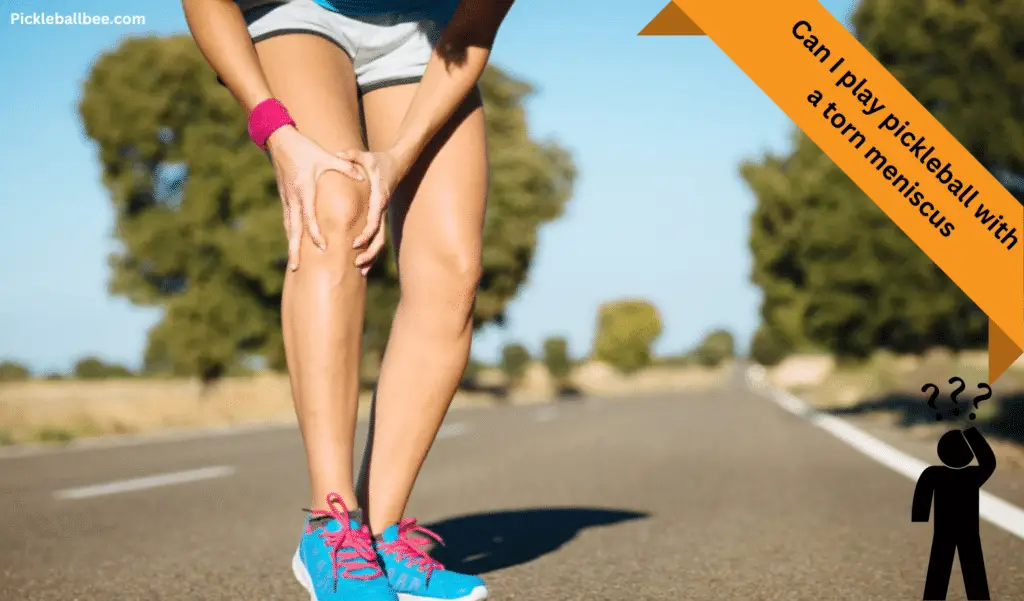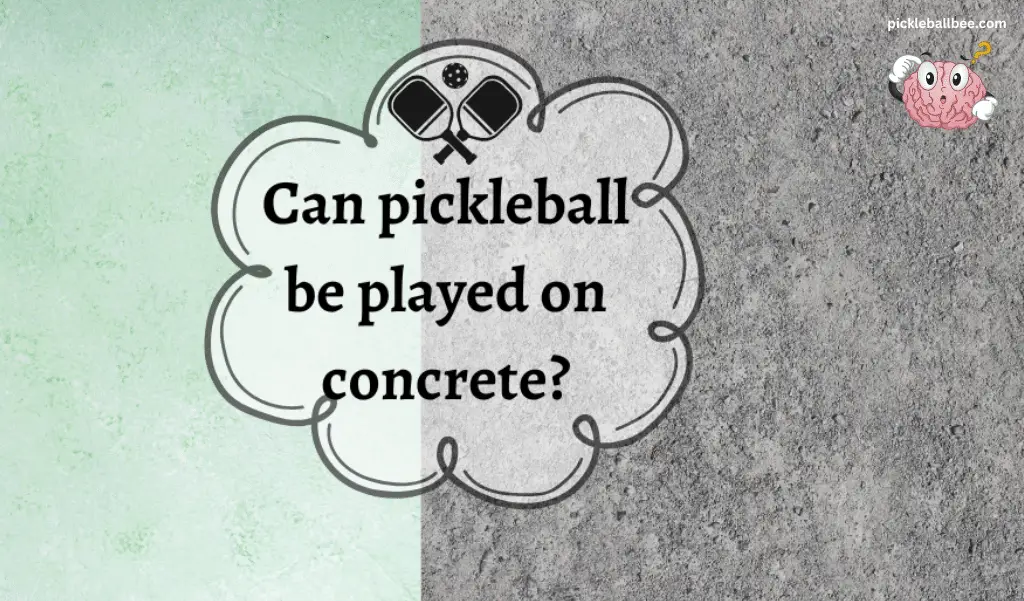Are you a passionate pickleball player? If so, then chances are you’ve heard of a delaminated Pickleball paddle. But what is it and why does it matter? Understanding the answer to these questions could make all the difference in improving your gameplay and making sure you don’t have a mishap on the court! So let’s dive into this interesting piece of pickleball technology: what is a delaminated pickleball paddle? A deep insight into its design, advantages, and care tips will be explained throughout this blog post.

Understanding Pickleball Paddles
Before diving into the specifics of delamination, it is important to understand the basic structure of pickleball paddles. Pickleball paddles are typically made from either composite or wood materials and consist of a core, face, and edges. The core is the innermost layer of the paddle and is usually made from a honeycomb foam material. This helps to provide power and control while you play. The face of the paddle is the most prominent layer and is what you hit the ball with. It’s usually made from graphite or fibreglass and helps to absorb shock and provide a better playing surface. Finally, the edges help to keep the paddle from warping or breaking over time.
What is Delamination?

Delamination occurs when the face of a paddle comes apart from its core. This can cause serious damage to your paddle, making it difficult or impossible to play with. Delamination can be caused by a variety of factors, such as poor manufacturing, extreme temperatures, excessive wear and tear, and age. Generally speaking, the more often you use your paddle, the more likely it is to delaminate.
What is a Delaminated Pickleball Paddle?
A delaminated pickleball paddle is one that has had the face or core come apart from each other. This makes it difficult to use and can drastically reduce your performance on the court. Delaminated paddles are also more prone to breaking, which can be dangerous if you’re playing with someone else.
Having a delaminated paddle can negatively affect your game in many ways. For example, a delaminated paddle will be less responsive and won’t generate as much spin or power. It also won’t absorb shock as well, which can lead to an uncomfortable playing experience. In addition, the edges of your paddle may become warped over time, and you won’t be able to control where the ball goes as accurately.
Signs of Delamination
Identifying delamination in a pickleball paddle is essential for players to address the issue promptly. Some common signs of delamination include:
- The face of the paddle is not flush with its edges
- The core appears to be bulging from the face or edges
- There are visible gaps between the layers of the paddle
- The face becomes discoloured or chipped away in spots.
- Changes in the paddle’s weight or balance.
If you notice any of these signs, it’s important to act quickly and replace your paddle. Delamination can worsen over time, leading to further damage that may cause injury or even break the paddle.
Why Is a Delaminated Pickleball Paddle a Problem?
Ah, the delaminated pickleball paddle. Sounds like a minor issue, right? Wrong. It’s a big deal, and here’s why.
Picture this: you’re at the Kitchen line, ready to make that killer shot. Your opponent serves, and you hit back with a paddle that’s seen better days. The ball flies like it’s got wings, way more than it should. Why? Your paddle’s delaminated, my friend.
So, what’s the big whoop? Well, that extra “spring” in your paddle isn’t just unfair; it’s downright dangerous. We’re talking about a sport where players are practically nose-to-nose at the Kitchen line. That extra oomph could lead to injuries. Not cool, right?
Here’s another twist. Paddles get the green light from USA Pickleball based on their power levels. But delamination is a sneaky beast. It happens over time, meaning a paddle that was once A-OK becomes a rule-breaker. It’s like a car passing its inspection, then losing its brakes a week later. Not exactly safe or fair, is it?
And let’s not forget the pros. These folks are playing for keeps, not just for fun. Their livelihoods are on the line. So, if one player’s using a delaminated paddle, it throws the whole game off balance. It’s like bringing a gun to a knife fight; it just doesn’t square.
So, what’s the fix? Keep an eye on your gear. If your paddle’s showing signs of wear and tear, replace it. It’s that simple. And for the love of the game, let’s make sure we’re all playing by the same rules. After all, the integrity of pickleball is what makes it great.
Impact of Delamination on Performance
A delaminated pickleball paddle can significantly affect a player’s performance. As previously mentioned, a delaminated paddle will be less responsive and won’t generate as much spin or power. It can also lead to an uncomfortable playing experience due to the lack of shock absorption. Additionally, the edges of your paddle may become warped over time and you won’t be able to control where the ball goes as accurately. It is crucial to address this issue promptly to avoid compromising your performance and enjoyment of the game.
Dealing with Delamination
If you notice signs of delamination in your pickleball paddle, it is essential to take action to rectify the issue. You can take the following steps to resolve delamination:
Step 1: Evaluate the extent of the delamination. Determine if it is a minor separation or a more severe issue that requires professional attention.
Step 2: If the delamination is minor, you can try repairing it yourself using a high-quality adhesive recommended by the paddle manufacturer.
Step 3: For more severe delamination or if you are uncertain about repairing it yourself, consider seeking professional assistance from a pickleball paddle specialist or a reliable paddle repair service.
Professional Maintenance and Repair
Professional maintenance and repair services can be invaluable when it comes to addressing delamination and other paddle-related issues. These experts have the knowledge, skills, and specialized equipment to assess, repair, and restore your pickleball paddle to its optimal condition. They can also provide guidance on proper paddle care and offer advice on selecting the right paddle for your playing style.
Tips for Your Pickleball Paddle to Prevent Delamination

To care for a pickleball paddle in general to prevent delamination, here are some tips:
- Avoid Extreme Temperatures: Keeping your paddle away from extreme temperatures, both hot and cold, can help prevent delamination.
- Clean Your Paddle Regularly: Cleaning your paddle regularly with a damp cloth can help to remove dirt and debris that may lead to delamination over time.
- Use Protective Gear: Using a paddle cover can help to protect your paddle from dirt, dust, and debris when not in use. This helps to keep it in good condition for longer periods of time.
- Avoid Excessive Wear and Tear: Using your paddle as intended is important to avoid unnecessary wear and tear that may lead to delamination over time.
- Store Your Paddle Properly: Storing your paddle in a dry environment can help to preserve its condition and prevent delamination.
Conclusion
A delaminated pickleball paddle can significantly impact a player’s performance and enjoyment of the game. Understanding what delamination is, its causes, and how to prevent and address it are crucial for pickleball enthusiasts. By following proper paddle care guidelines, regularly inspecting your paddle, and seeking professional assistance when needed, you can maintain the integrity and longevity of your paddle, ensuring optimal gameplay experiences.
FAQs
-
Can I repair a delaminated pickleball paddle myself?
Yes, you can attempt to repair a delaminated pickleball paddle yourself using a high-quality adhesive recommended by the manufacturer. However, it is important to assess the extent of the delamination before attempting repairs and consider seeking professional assistance if necessary.
-
Is it dangerous to play with a delaminated paddle?
Yes, playing with a delaminated paddle can be dangerous as it is more prone to breaking, which can lead to potential injury. It is important to replace your delaminated paddle promptly to ensure a safe playing experience.
-
How often should I inspect my pickleball paddle?
It is recommended that you inspect your pickleball paddle regularly for signs of delamination or any other damage. If you notice any issues, it is important to take action and address the issue promptly.
-
What are some tips for properly caring for my paddle?
Some tips for properly caring for your pickleball paddle include avoiding extreme temperatures, cleaning it regularly with a damp cloth, using protective gear such as a paddle cover, avoiding excessive wear and tear, and storing it in a dry environment. Following these tips can help to prevent delamination.
-
How long does a pickleball paddle typically last before delamination occurs?
The lifespan of a pickleball paddle will vary depending on the quality and care given to it. With proper maintenance and regular inspections, a quality paddle can last for several years before delamination occurs. However, if you notice any signs of damage or delamination, you should take action to address the issue promptly.
“Delamination can turn a beloved pickleball paddle into a liability on the court. Protect your game and invest in proper care to keep your paddle intact and your shots on point.”


